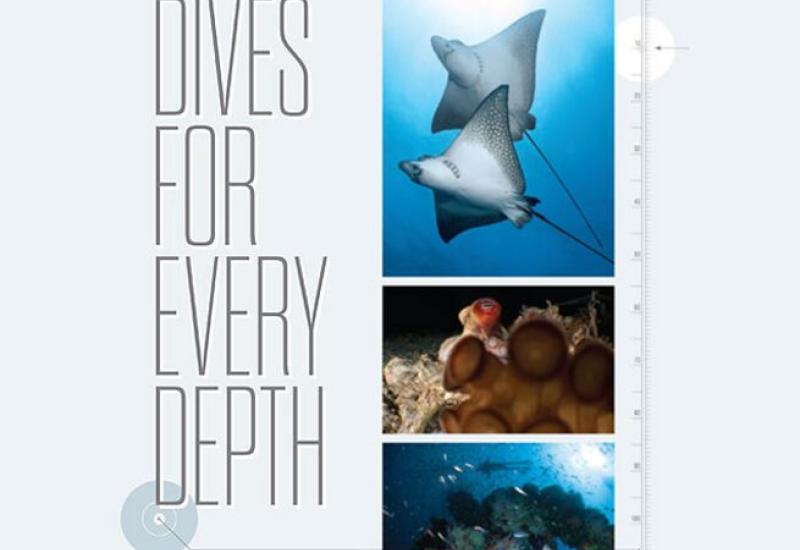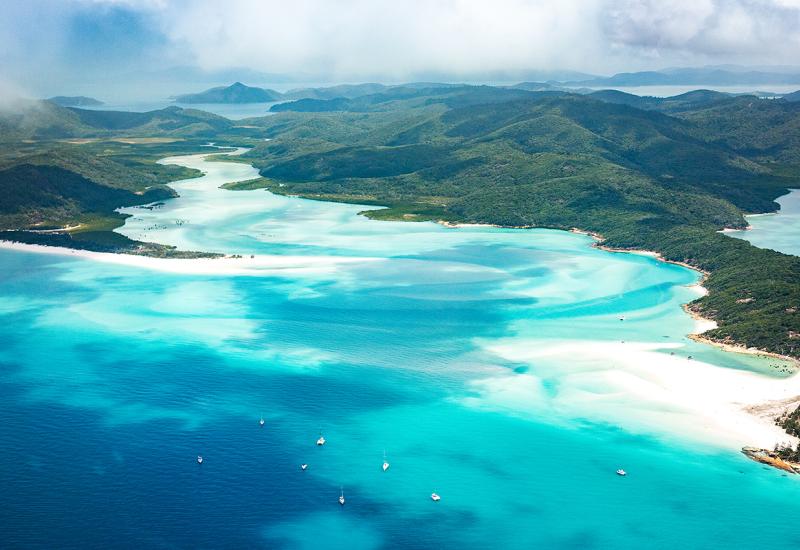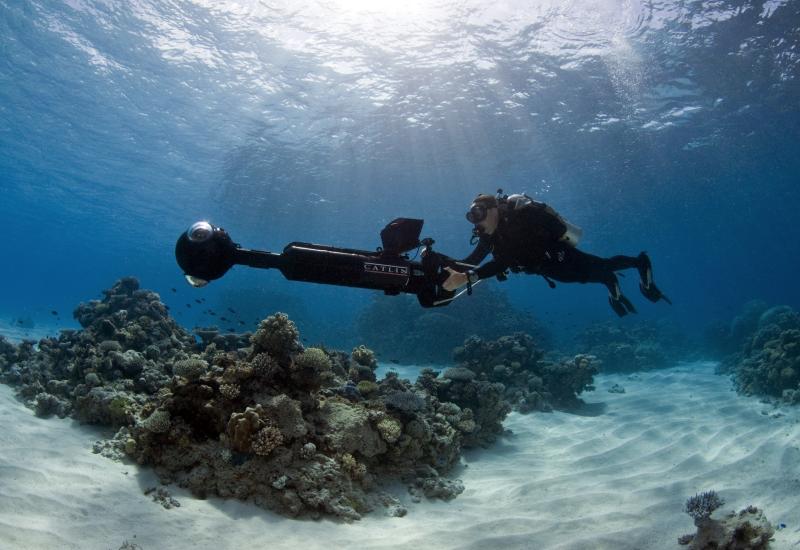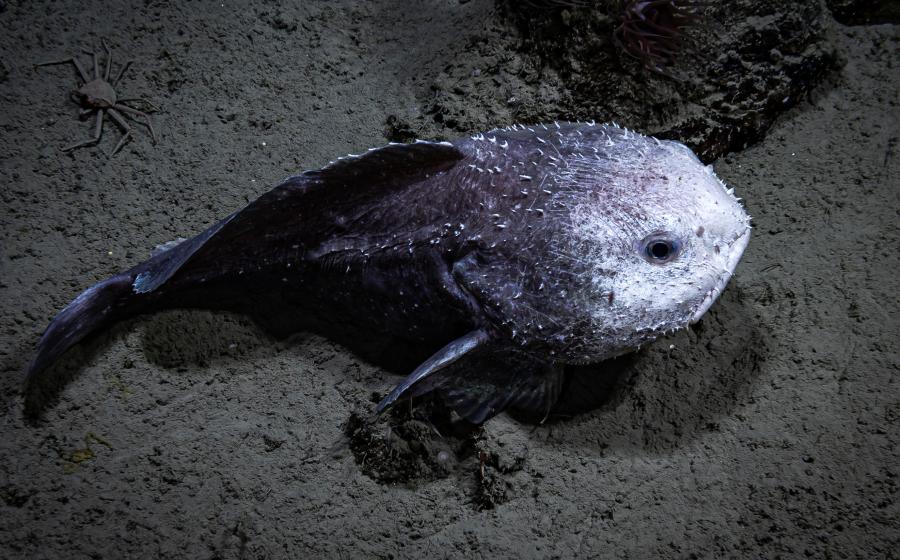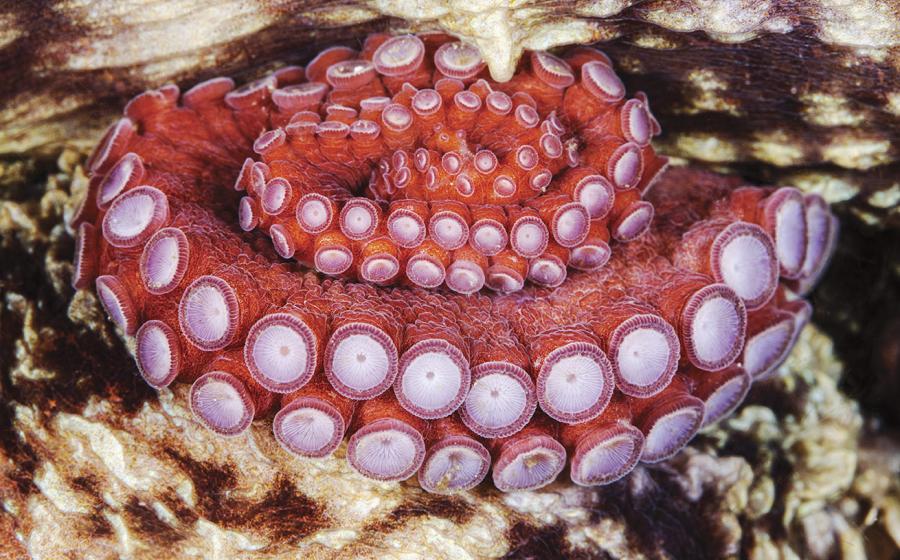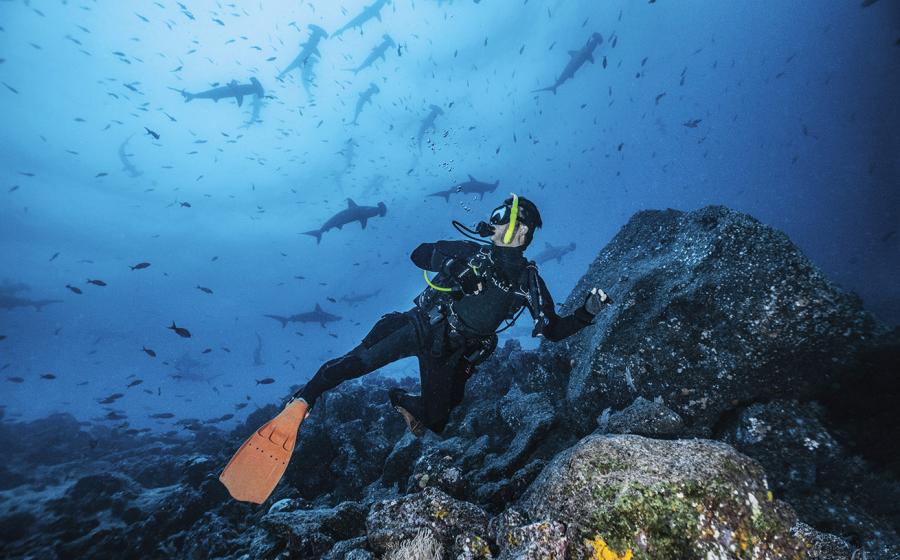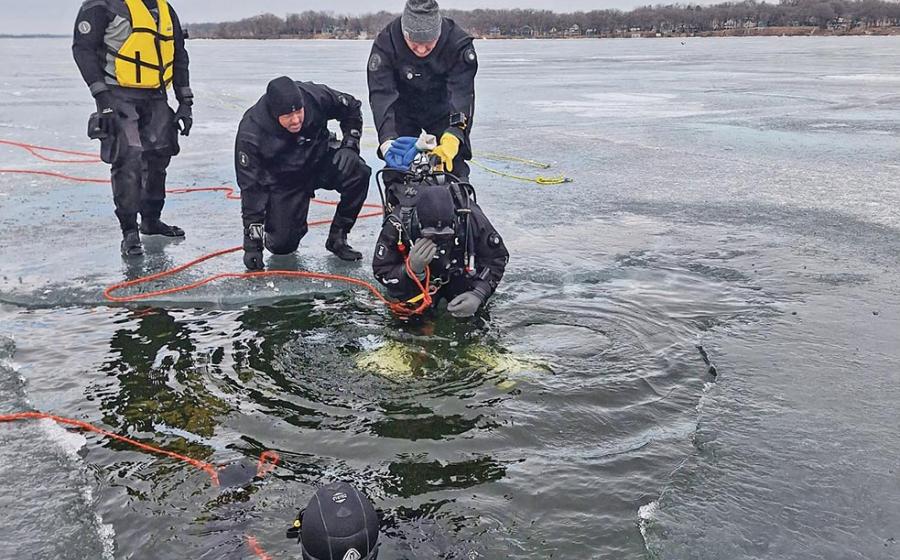Graveyard of the Pacific: Scuba Diving Chuuk Lagoon
WHAT LIES BENEATH
Among wreck divers, Chuuk Lagoon needs no introduction. Perhaps nowhere else on our blue planet can we so completely immerse ourselves in maritime history. A high school lecture on World War II naval battles is one thing, but scuba spelunking at ground zero in the tropical Pacific is another learning experience altogether. Flying westward at 35,000 feet, my wife, Melissa, and I didn’t know exactly what we’d find in the hallowed waters of Micronesia. But we were certain that the warships-turned-artificial reefs were going to be bucket-list epic. And that we would likely be a bit uncomfortable at times, waging our own internal battles — awash in regret and sympathy one moment, reverence and awe the next.
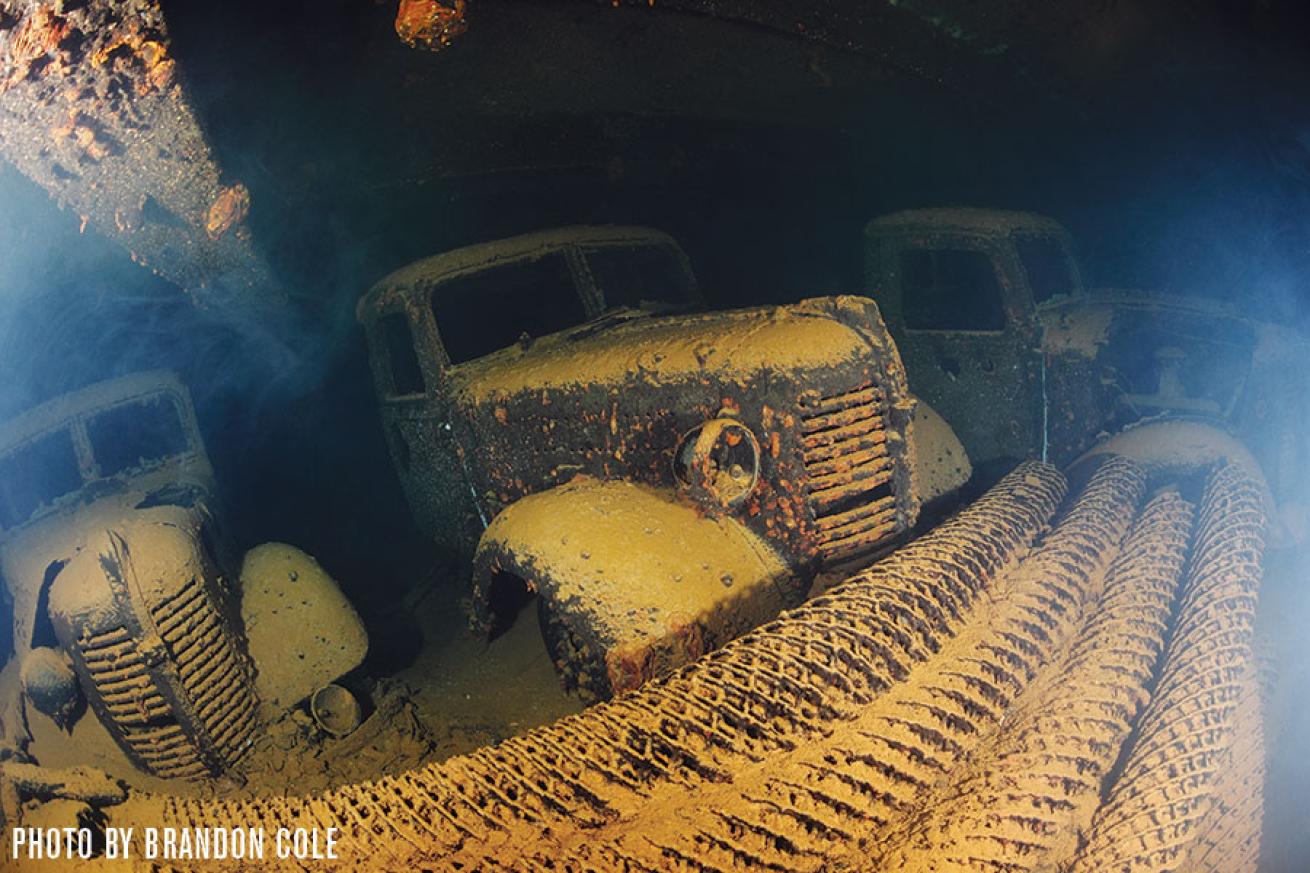
Brandon ColeThe well-preserved trucks and equipment clustered inside a cargo hold.
After two days of travel, we are finally here — Chuuk (aka Truk), part of the Federated States of Micronesia — and about to get wet. Skimming across mirror-smooth waters, our guide, Rob, prefaces our baptism by saying that few divers emerge from this Graveyard of the Pacific unmoved, that the verdant island archipelago above the waterline cradles something sacrosanct beneath. For it was here on Feb. 16 and 17, 1944, during Operation Hailstone, that the U.S. Navy dealt the Japanese fleet a crippling blow. Morethan 60 vessels succumbed to a fiery barrage from air and sea. Thousands of lives were lost. Seven decades later, Japanese people still visit Chuuk to honor their loved ones and countrymen.
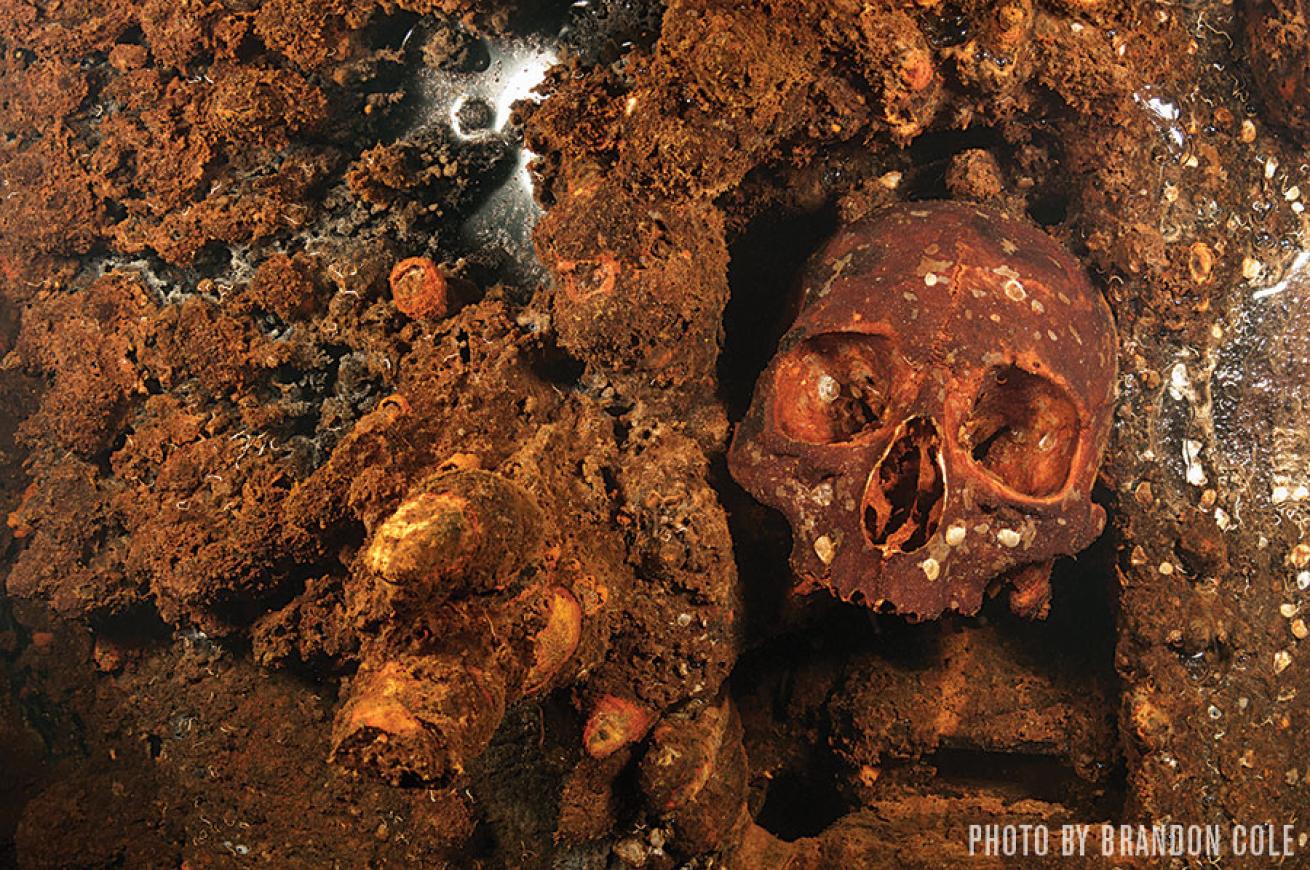
Brandon ColeThe remains of a fallen soldier rests on amidst the shipwreck, his skull fused to the bulkhead.
FROM DEATH SPRINGS LIFE
Our first dive begins with an explosion of life. The Shinkoku Maru is one of the most popular sites, a must-do wreck. On the outside, the former oil tanker is eye-poppingly bright with soft corals — vibrant reds, yellows and purples. Curtains of color hang from the superstructure in about 40 or 50 feet of water, around which iridescent damselfish swirl and shimmer. A wide-angle shot of the bridge covered in its Crayola mantle could be Fiji, or the Maldives. But the mammoth cannon on the front deck reminds me that this reef’s foundation is something quite different. Following Rob, we duck inside the 500-foot-long structure, leaving colors behind, into a room with a silt-covered floor — and a metal table on which a pile of bones rests, the skeletal signature of a crew member. We’re in the sick bay, and I struggle to shift mental gears from the motion and splendor outside to the somber finality of the scene in front of me now. After pausing a respectful moment, we back out into the light, swimming through a school of jacks and over to an invertebrate-encrusted railing. Gazing over the ship’s side, Melissa spies a spotted shape reclining on the sand below. I launch from my perch, gliding to touch down gently at 110 feet, cozying up to a zebra shark. The ominous bulk of the Shinkoku looms above.
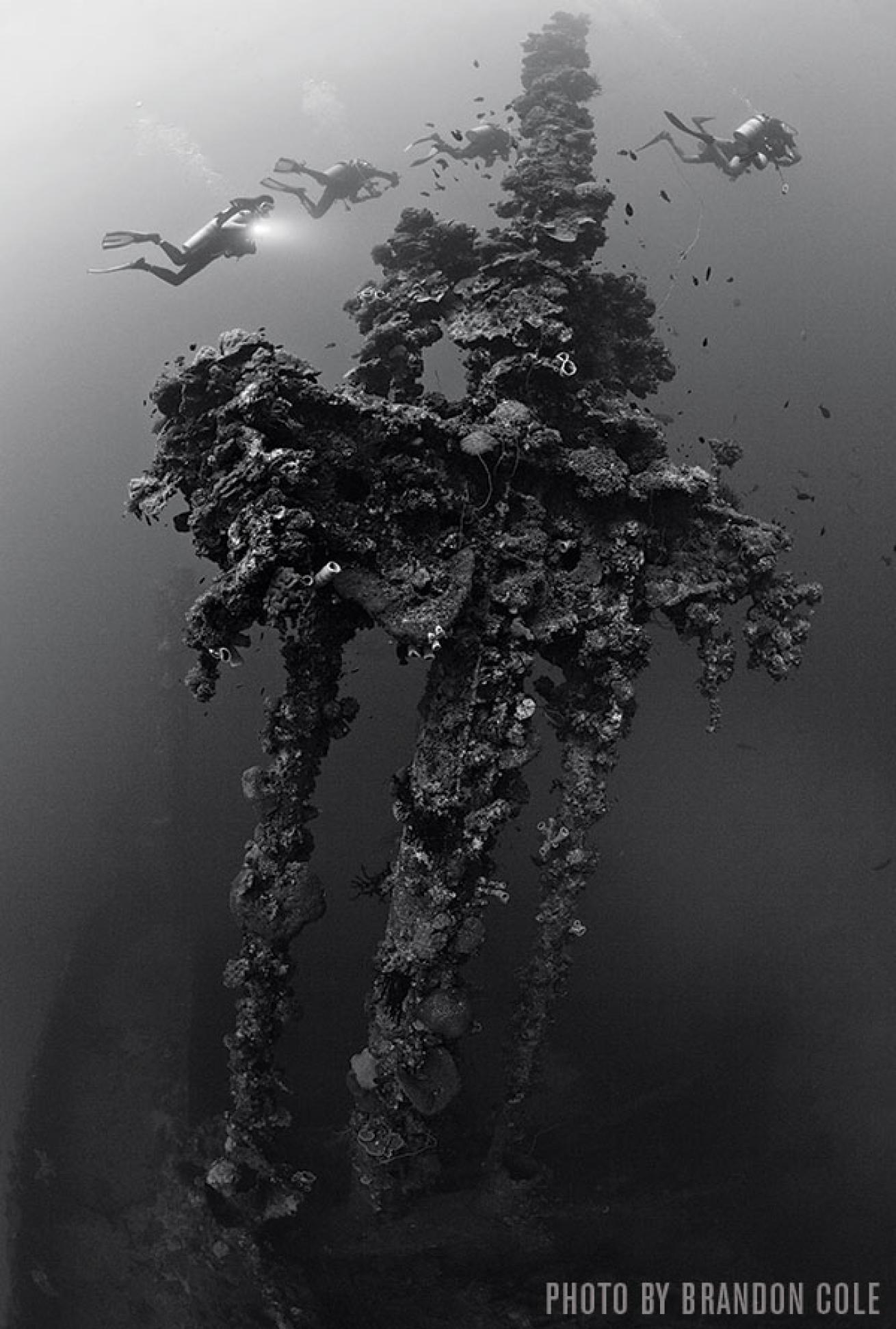
Brandon ColeDivers swimming near the wreckage of one of the ships.
INTROSPECTION AND JUBILATION
We could have kept a scuba psychiatrist busy. “How did you feel on that dive?” As our week progressed, our emotions were continually pulled this way and that. On one wreck, we’d have to come to grips with wholesale devastation in the form of gaping torpedo holes, as well as human tragedy evidenced by artifacts such as a toothbrush or scraps of clothing. At a different site, we’d rejoice at the stunning beauty of the living, breathing, thriving reef — all the more remark- able for our knowledge of what came before.
The Fujikawa Maru supports a lush garden of soft corals, acts as a magnet for fish life, and is chock-full of relics. A 433-foot former aircraft ferry, it is positioned upright on an even keel at 112 feet. Our plan sees us descending into hold No. 2, the shadowy belly of the beast in which Zero fighter planes lie scattered atop a mountain of fuel drums. Even our powerful lights seem weak in the cavernous space, barely illuminating the twisted war birds. I can’t shake the feeling that I’m trespassing through some forgotten museum. Also on my shot list is the ship’s machine shop for the obligatory photo of R2D2 — compressor machinery that looks uncannily like its robot namesake. The Fuji is a must-dive site, so if you can, get there soon. It’s recently begun to show its age and is noticeably deteriorating after 70 years in the corrosive sea. Time is taking its toll on many Chuuk wrecks. Some are collapsing quicker than others.
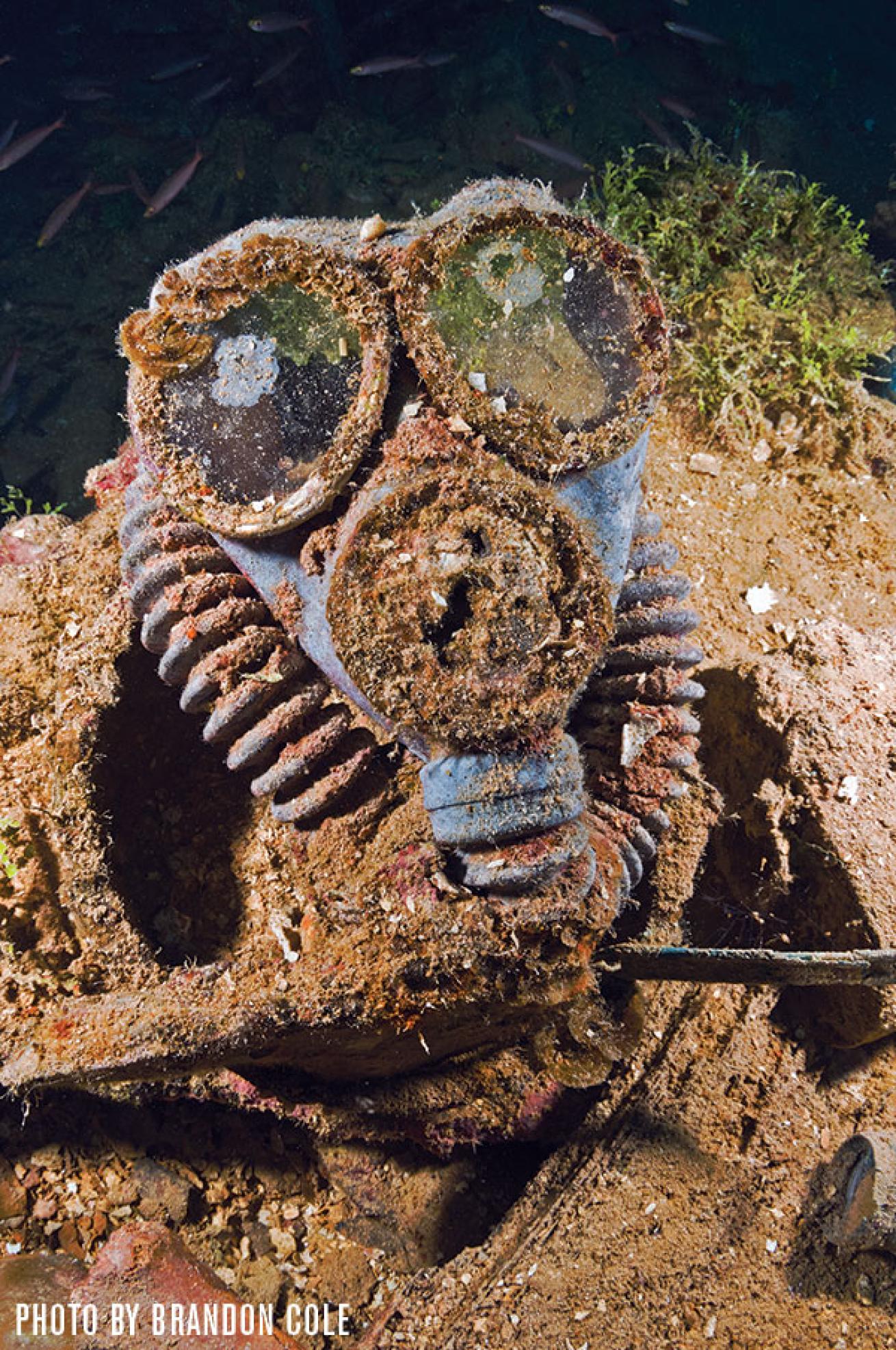
Brandon ColeA gas mask from the Kiyosumi Maru.
Throughout the week, Rob pulls out surprise after surprise out of his diving hat. Inside the wreck of the Heian Maru, a massive luxury cruiser turned supply vessel, we swim past periscopes lining a companionway, into the murky depths of the hull, packed to the hilt with Long Lance torpedoes. We tour the Nippo Maru to find wheeled anti-tank guns, a gas mask straight out of an apocalyptic thriller, and at 80 feet, the photogenic bridge with a sponge-covered engine telegraph resembling Mr. Potato Head. On the Rio de Janeiro, a submarine tender lying on its starboard side, Rob proudly shows us one of his most prized finds: a samurai sword with an elegantly curving blade. Belowdecks and aft, intact boxes brimming with glass beer bottles await a celebratory moment that would not come. In Chuuk, every ship has a story, and every dark corner a secret.
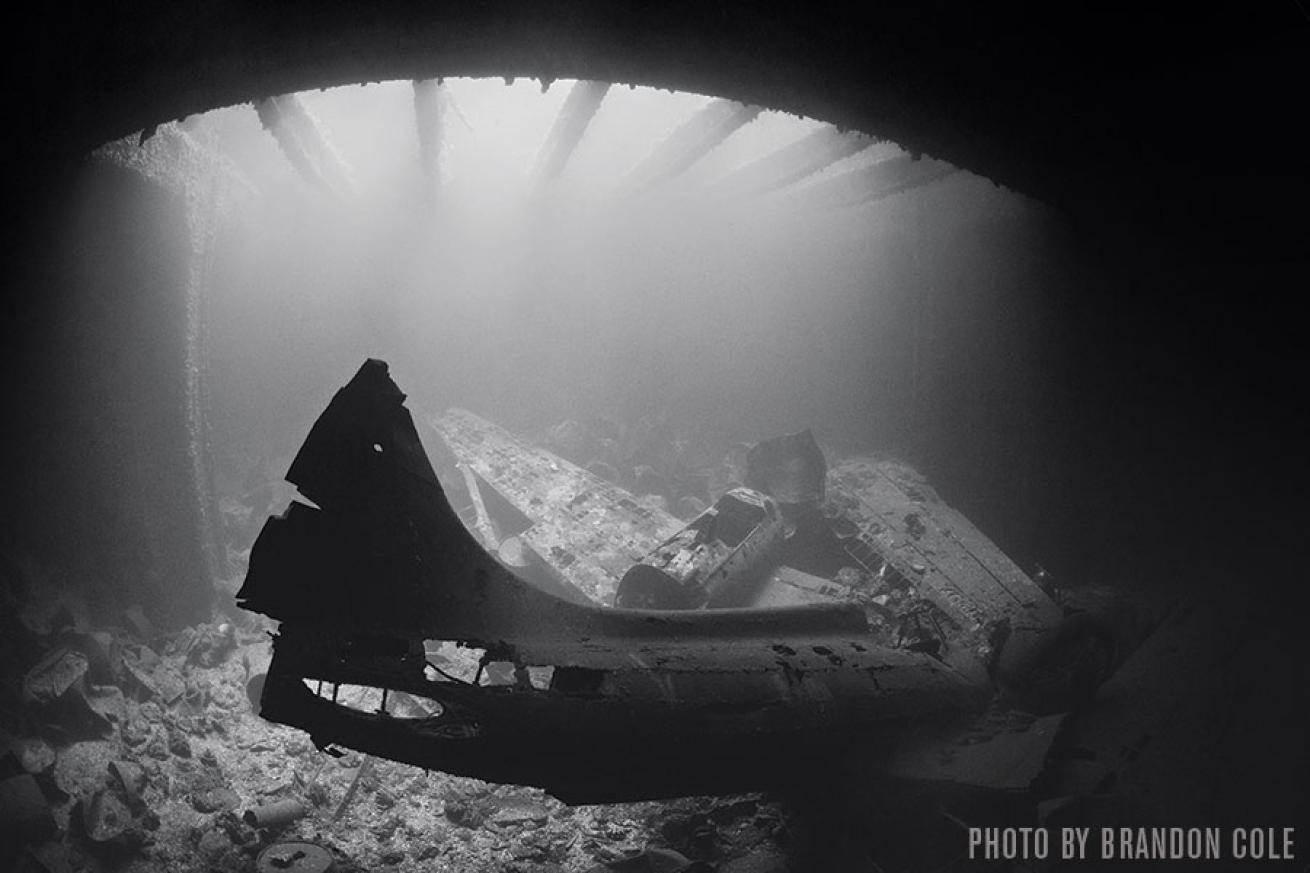
Brandon ColeAirplanes inside the Fujikawa Maru.
Case in point is the Yamagiri Maru, which erupted in flames after being hit by two bombs. It shot to the ocean’s floor in less than a minute, taking 12 crew members with it. Inside the wreckage, we come across giant artillery shells 14 inches in diameter, destined for the fleet’s battleships. Our mission on the Yamagiri is the generator room, claustrophobic and darker than a tomb. I nearly have a heart attack when Rob directs our attention to the human skull fused by the blast onto the bulkhead. A few feet below the engineer’s cranium are his hand and finger bones, similarly embedded in the rust-colored, steel crypt.
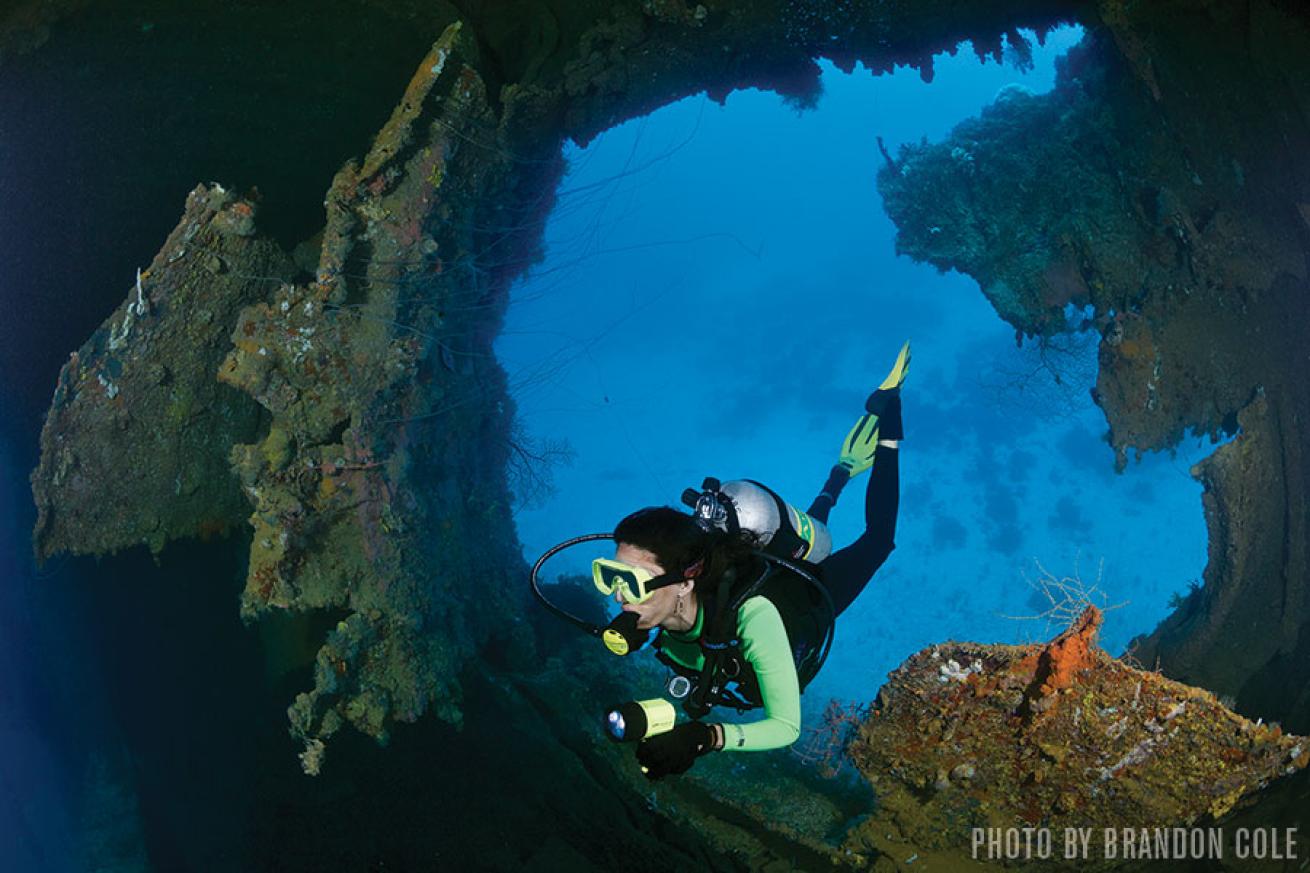
Brandon ColeA diver exploring the hull of the Gosei Maru.
The pinnacle of a Chuuk Lagoon expedition for many divers is the San Francisco Maru, the so-called Million Dollar Wreck. (The ship was fully loaded with a valuable cache of military ordnance — mines, bombs, and ammunition for weaponry large and small.) Pummeled by six 500-pound bombs, the San Francisco sank stern first off the east side of Tonoas Island. Resting upright in 210 feet, it’s one of the deepest wrecks in the lagoon. Divers first reach the broad deck at a heady 165 feet, and after the long descent, it’s like discovering a time capsule. Three armored Mitsubishi tanks were on the deck when the ship met its end, and it’s easy to see how one of them was tossed toylike atop the other by the sheer force of colliding with the ocean floor. A favorite among techies using rebreathers and custom gas blends, the San Francisco is unquestionably an advanced dive. Only those with proper training and equipment should venture into its inner reaches, and only with an experienced guide. As we’re using open circuit and diving single bottles, serious interior exploration is not an option. Our lean 23 percent nitrox mix gives us just enough time for a quick dip into the forward hold at 170 feet, where I scramble to photograph the water trucks balanced precariously on cross beams, before climbing skyward for our decompression stops.

Brandon ColeGlass beer bottles await a celebratory moment that would not come.
A LONG WAY FROM LIGHT
Nearby is the Hoki Maru, a 7,000-ton cargo ship, the only verified captured vessel in Chuuk’s graveyard. Inside hold No. 5 at 135 feet, well-preserved trucks are clustered together in a creepy cadre. We steer clear of what looks like tendrils of smoke wafting through the metal walls in this bizarre, undersea parking lot. Supposedly it might be fuel or toxic chemicals still leaking from the wreck. I snap a few pictures and move on to check out other vehicular attractions, namely a tractor, bulldozer and dump truck, followed by one of our most challenging penetrations of the trip. Rob navigates unerringly, guiding us confidently through a bewildering series of turns and switchbacks in three dimensions. We carefully squeeze through tight spaces framed in jagged metal sheets, ascend over railings, and slip under girders for what feels like forever, but in truth, it's only a few minutes until we reach our destination. It’s a cramped chamber at 140 feet, normally cloaked in a Stygian blackness but now glowing under our lights. The sloping floor is strewn with hundreds of bottles, finely dusted with a layer of orange-brown silt. This mountain of spirits was no doubt intended to help buoy the morale of a hard-working crew. We offer a toast of farewell and then pause to take it all in, the peculiar feeling of being in the middle of so much metal, hidden away from the universe. The silence, other than for the beating of my heart, is deafening. Time seems to slow, yet my senses are alive, and I can almost feel the Hoki Maru pressing down all around me. It’s exhilarating, and a bit scary. This must be similar to the rush that cavers get when they’ve burrowed into the center of the Earth, far from light. Rob’s flashing light breaks me out of my reverie, beckoning me over the endless field of bottles to where a hint of blue points the way out — out and up.
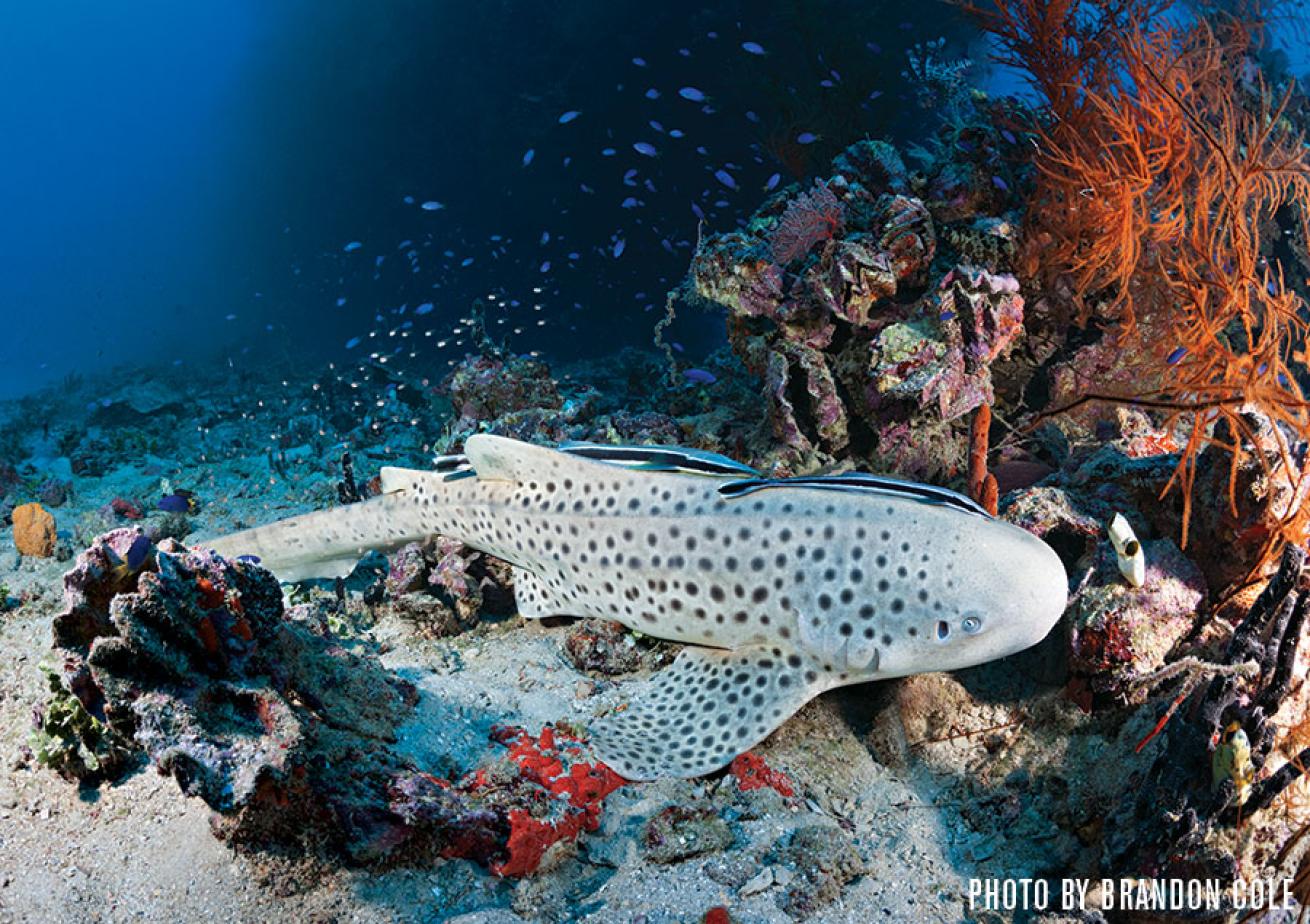
Brandon ColeA zebra shark rests on the seafloor next to Shinkoku Maru.
Breaking the surface, Melissa and I launch into an excited account of what we have just seen and felt as we swam through the halls of history. We are floating under a cerulean sky, the same sky from which, for those two fateful days in 1944, death rained down, and a fleet disappeared beneath the waves. The contrast between the tragic past and the peaceful present is strikingly profound. I feel connected in some way to what happened, privileged that my time underwater has given me a new understanding of, and appreciation for, what lies beneath Chuuk Lagoon.
---
Looking for more information the plan your trip to Chuuk Lagoon? Check out these other great articles:
Divers Guide to Chuuk Lagoon
Underwater Photography: How To Shoot Wrecks at Chuuk Lagoon
View More Photos Below
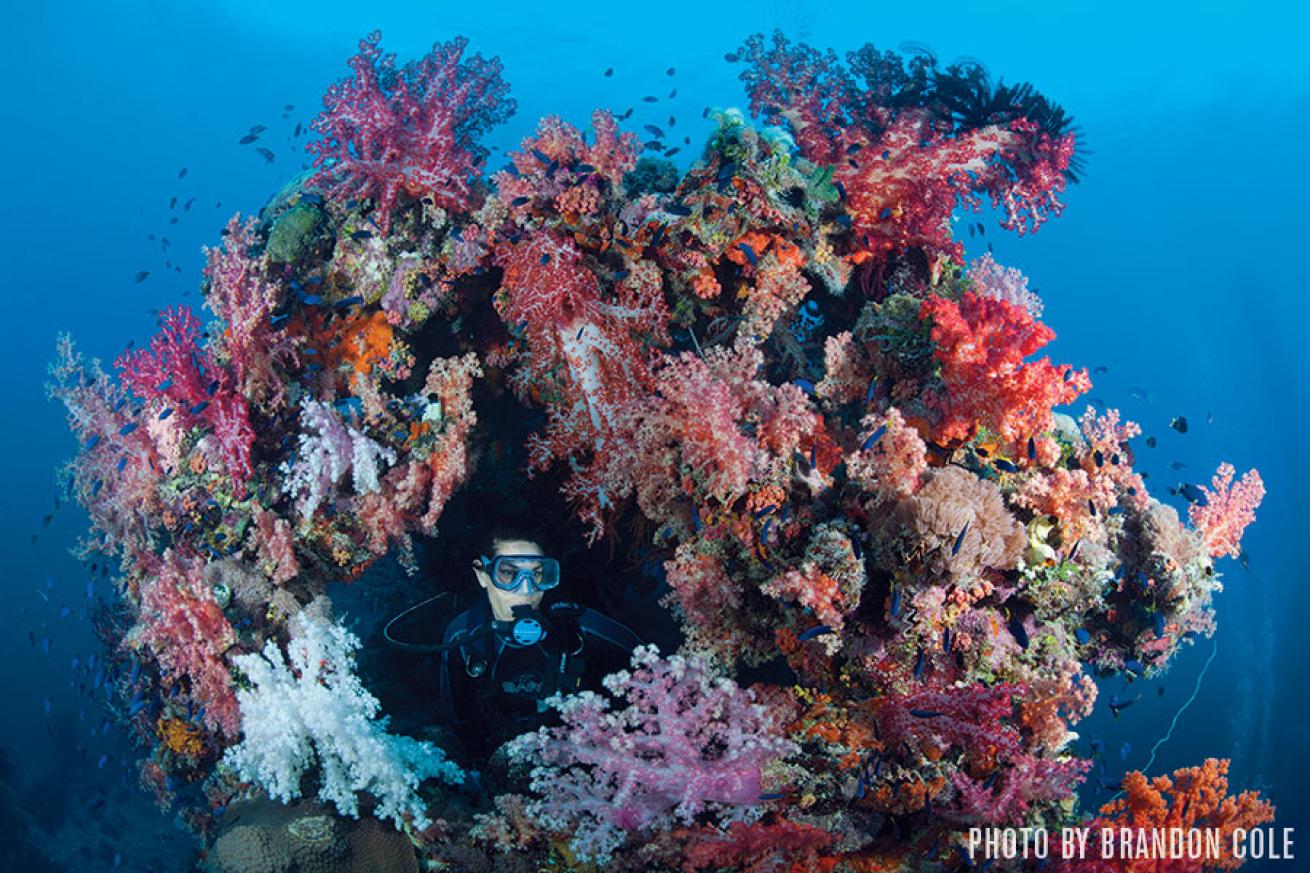
Brandon ColeThe bridge on Shinkoku Maru, covered with life after nearly 70 years underwater.
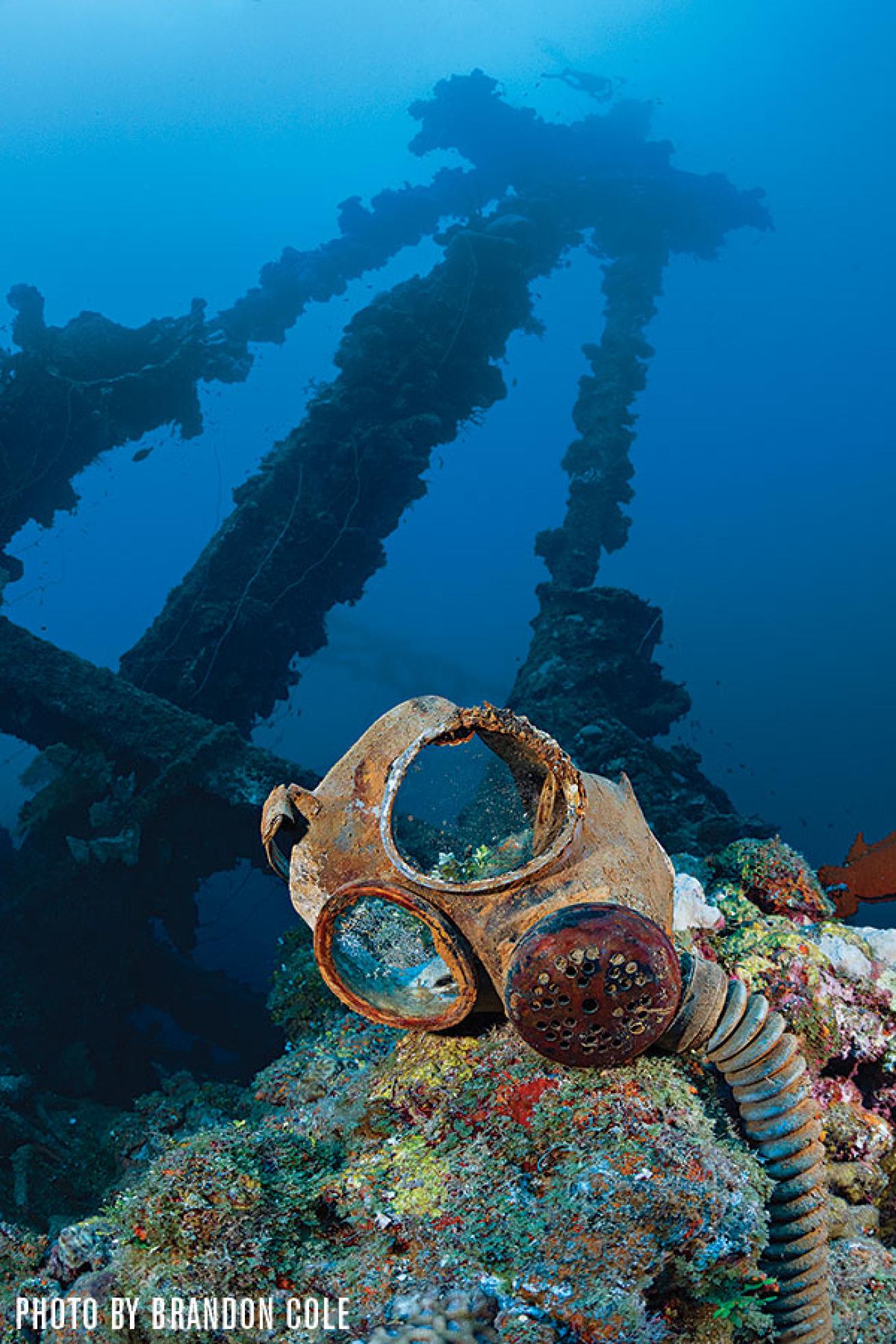
Brandon ColeA soldier's gas mask near the wreck of the Nippo Maru.
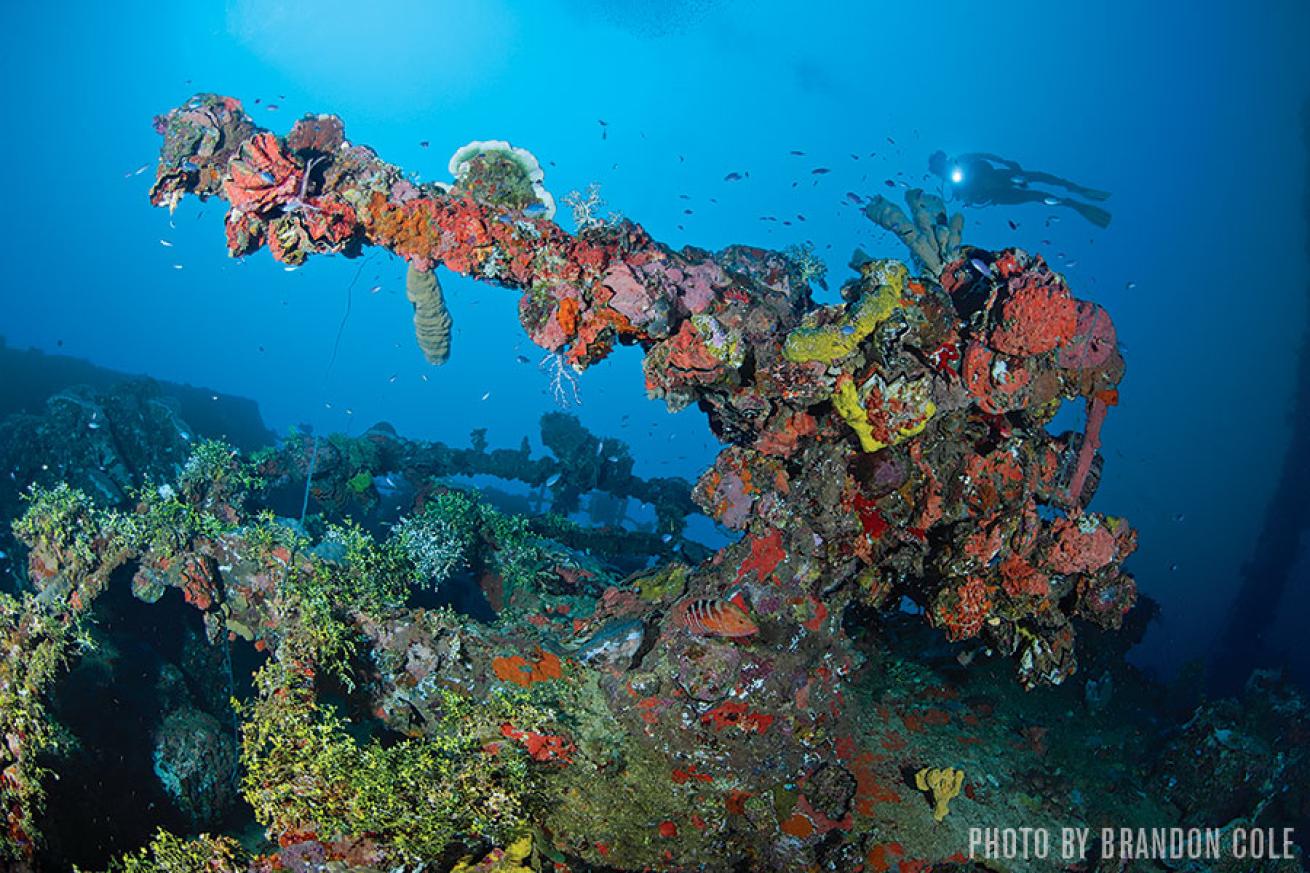
Brandon ColeA massive bow gun on Amagisan Maru.
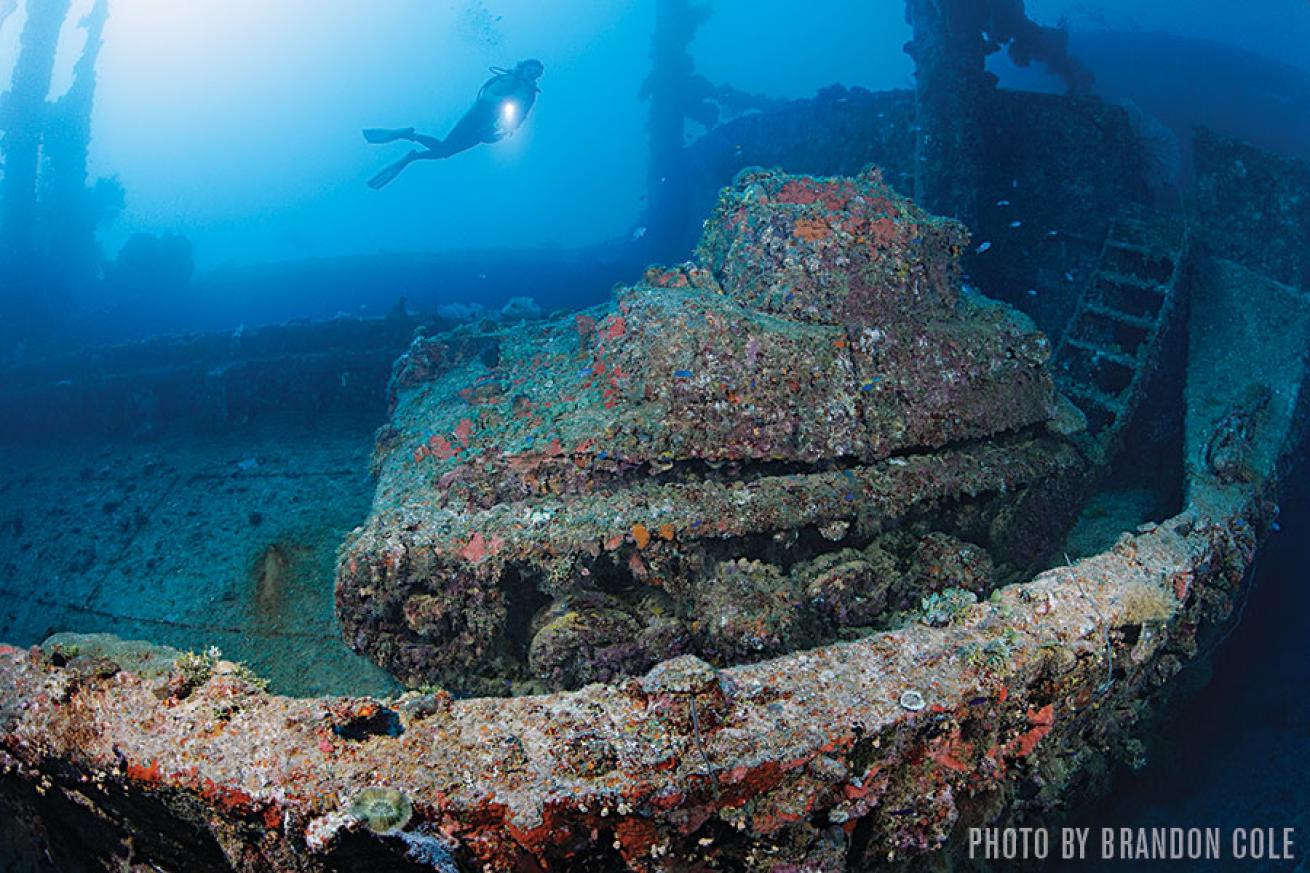
Brandon ColeAmong other artillery pieces, a Japanese battle tank covered in coral rests on the deck of the Nippo Maru at 125 feet.

Brandon ColeFine China inside the Heian Maru.
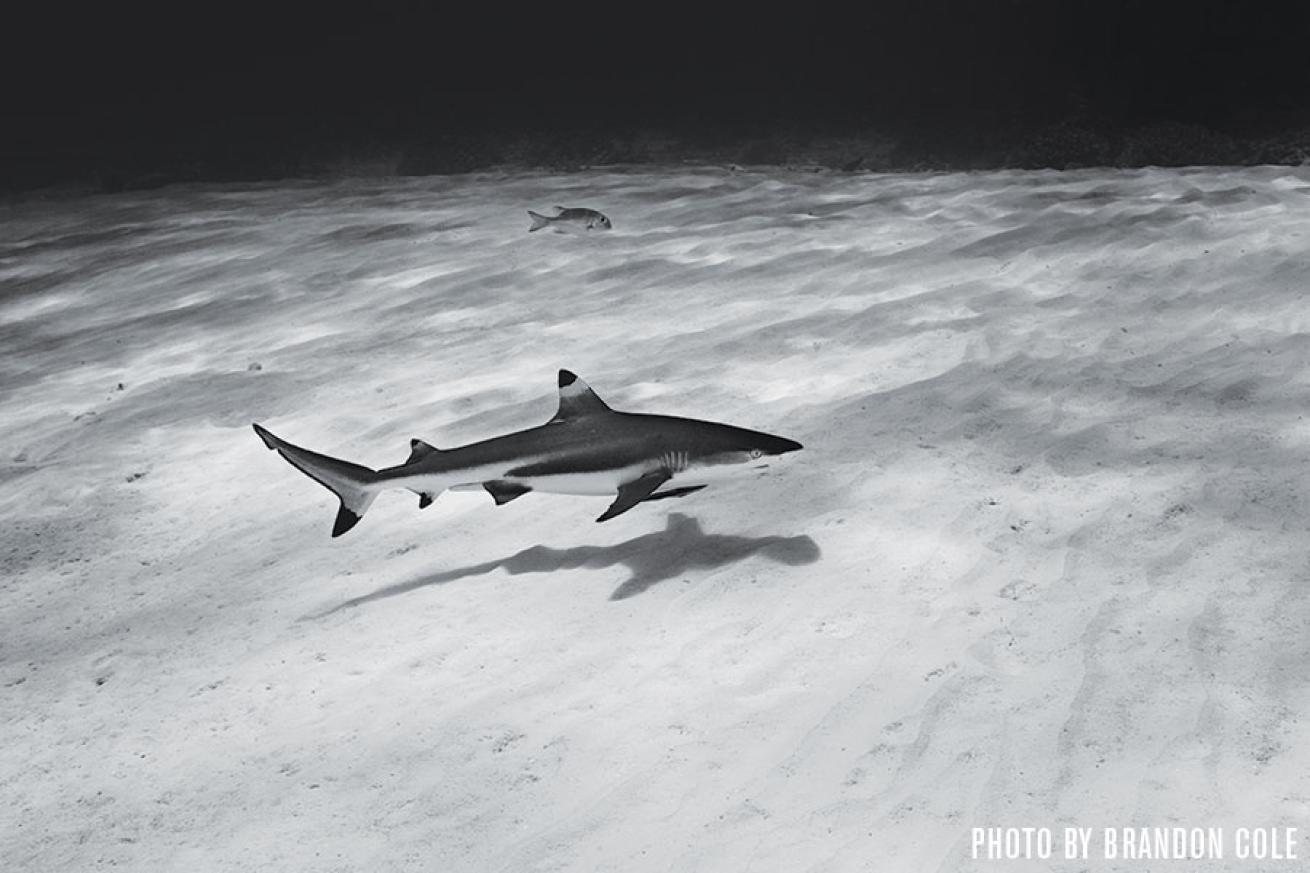
Brandon ColeBlacktip Reef Shark

Brandon ColeCompressor machinery inside the Fujikawa Maru.

